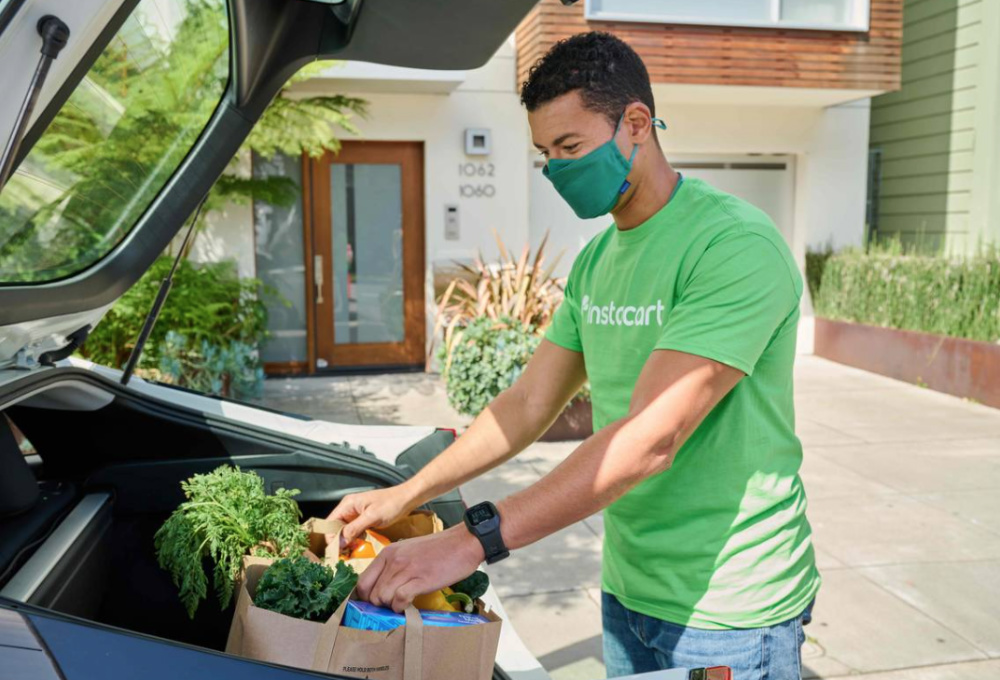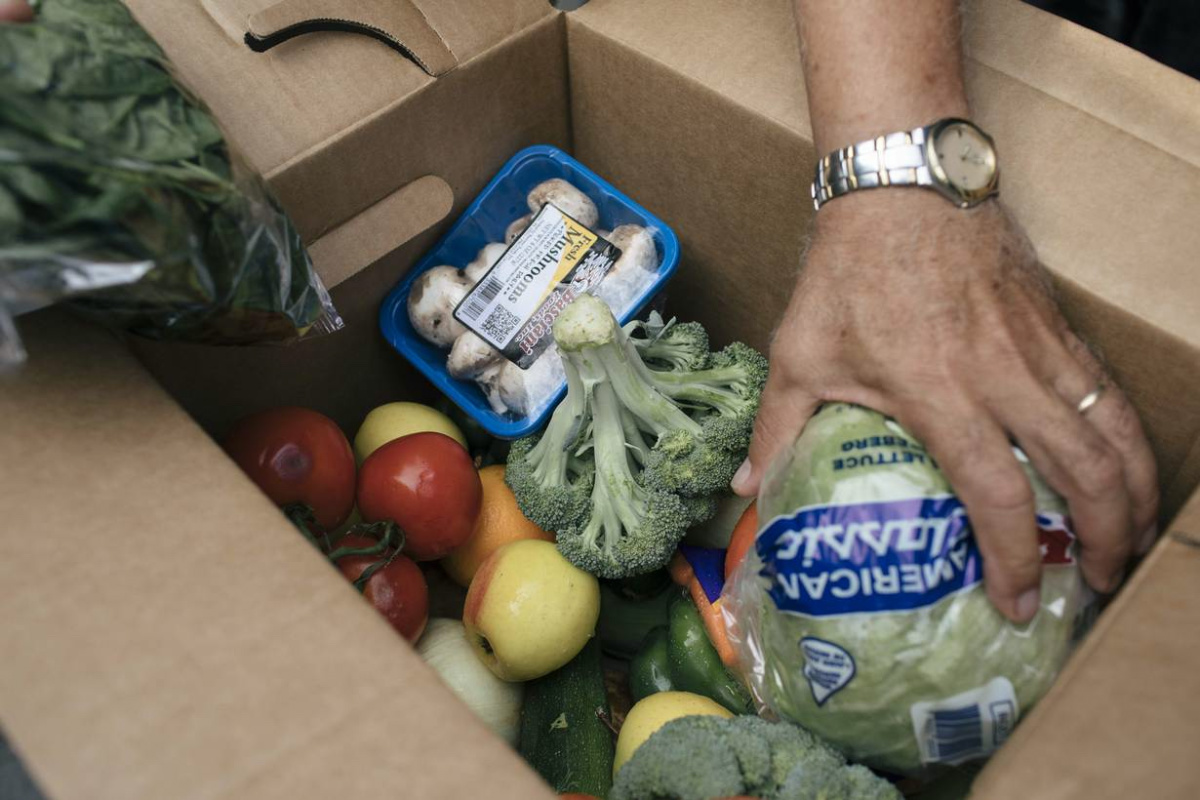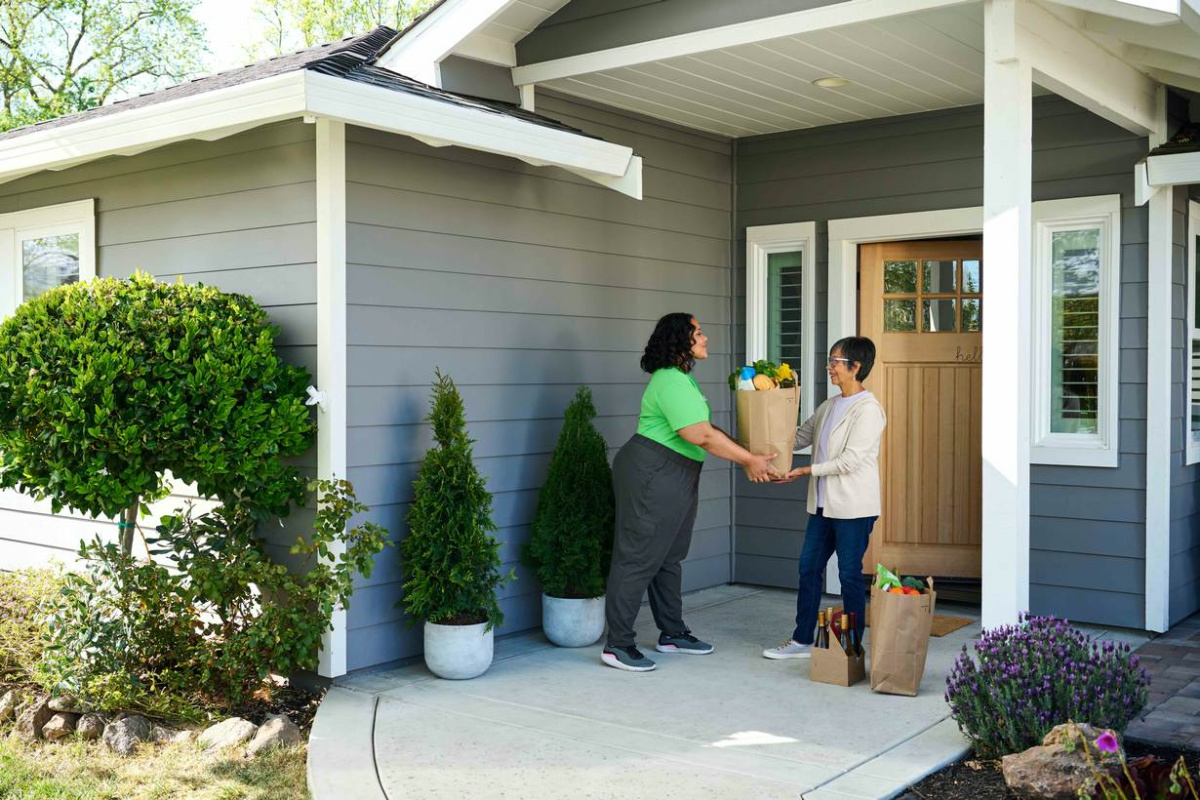
CAREY L BIRON, of Thomson Reuters Foundation, reports on the findings of new research showing that more than nine in 10 Americans can get food delivered at a click helping those who struggle to reach bricks and mortar stores…
Washington DC, US
Thomson Reuters Foundation
It was the COVID-19 pandemic that finally drove Dustin Karzen, hunkered down at home in Escondido, California, to a first: going online to buy groceries.
Karzen, who was in seminary school and getting food stamps to help provide for his family, took advantage of a federal pilot program allowing him to use the benefits to order food from local grocery stores to be dropped off by Instacart.
He is among a wave of people turning to delivery services, which anti-poverty experts say can help vulnerable groups who might otherwise struggle to access fresh, healthy food.
“Using delivery services was a safety measure – not having to go into a grocery store or be in proximity with a lot of people,” said Karzen, 33, who along with his wife and three children recently moved to near Boise, Idaho.
“It was born out of necessity, but after doing it for a while it became our go-to,” he said of grocery delivery, citing time savings and convenience.

An Instacart food delivery in San Francisco in April, 2021. PICTURE Handout photo by Instacart.
Online purchasing surged during the pandemic, rising in the United States by 43 per cent to about $US815 billion in the first year, according to the US Census Bureau.
The number of US households that bought groceries online roughly quadrupled to more than 64 million between August, 2019, and October, 2021, according to LEK Consulting.
“For someone working odd hours or long hours [who] has a family to feed, it can be really tough to get to the grocery store, whether it’s accessible or not. So this can be transformational.”
– Caroline George, a senior research assistant who co-authored a report by the Brookings Institution thinktank looking at how the services improved access for so-called food deserts.
The Federal Government took note, after the US Department of Agriculture launched a pilot program in 2019 allowing low-income households to use Supplemental Nutrition Assistance Program (SNAP) food coupons for online grocery purchases.
That was quickly expanded to cover nearly every state as the pandemic “highlighted the need to increase safe access to foods for SNAP participants,” an agency spokesperson said.
Delivery firms have also added new services and expanded the areas they cover – Uber Eats began offering grocery delivery in July, 2020, while Instacart said it had added nearly 50,000 store locations since March 2020.
Food delivery zones now reach 93 per cent of the US population, according to research published in May by the Brookings Institution thinktank that looked at how the services improved access for so-called food deserts.
Their expansion could be a “game-changer” for people who lack easy access to shops, and those facing mobility challenges or time constraints, the report said.
“For someone working odd hours or long hours [who] has a family to feed, it can be really tough to get to the grocery store, whether it’s accessible or not,” said Caroline George, a senior research assistant who co-authored the report.
“So this can be transformational.”

Food aid is packaged in Silver Spring, Maryland, amid the pandemic. PICTURE: Handout photo by Alyssa Schukar for Feeding America.
About 13 per cent of US census districts are considered both low-income and lacking access to food shops, according to the USDA.
While anti-hunger groups attribute food insecurity to multiple factors, unequal distribution of grocery stores has been increasingly recognized as a contributor.
In Washington, as in other cities, such patterns arose from a history of disinvestment coupled with structural racism, said Beverley Wheeler, director of DC Hunger Solutions, an advocacy group in the nation’s capital.
Neighborhoods in the capital used to have many small corner groceries, she said, but the growth of chain supermarkets pushed out most.
“The wards with the most income, the most education, a whiter population, all had more grocery stores. And the poorer neighborhoods … lacked grocery stores,” Wheeler said.
In November, the group found the city’s two poorest wards had just three grocery stores, compared to 16 in the richest.
Wheeler said delivery services could be particularly helpful for people with disabilities or chronic illness.
But she also cautioned that many elderly residents lacked internet connections and digital know-how, while federal assistance can be used for groceries but not delivery fees.
That cost can be a barrier: US delivery fees stand at about $US5 on average, according to Bain, a consultancy.
“Food delivery adds value for many consumers, but higher prices will only put delivery further out of reach for many food-insecure households,” said the Brookings report.
Others worry about the broader impacts of delivery on urban areas.
Prioritizing delivery services can end up “damaging the cityscape,” said Greg Lindsay, a senior fellow at NewCities, a global nonprofit.
In an effort to be as close as possible to customers, some delivery groups have taken over storefronts as “microwarehouses” and logistics hubs that can detract from street life and thus potentially hurt other shops, he said.
“It was already hard enough to make it as a small business, and this makes it harder to survive,” he said.

An Instacart food delivery in Pleasant Hill, California, in April, 2021. PICTURE: Handout photo by Instacart.
Food banks are also adopting online ordering and delivery models to address longstanding obstacles to accessing their aid – tackling issues from wastage to wait times and stigma.
Feeding America, a national network of food banks and food pantries, unveiled an online platform in 2020 and quickly saw benefits for service users, said Dianne Wortz, a senior program manager for the initiative, called OrderAhead.
The platform allows people to place grocery orders and then pick them up at a local food bank or other agency, and in some cases get them delivered, she said.
We rely on our readers to fund Sight's work - become a financial supporter today!
For more information, head to our Subscriber's page.
An OrderAhead user named Robert, a former journalist in Fredericksburg, Virginia, said the platform is “almost revolutionary”.
The 63-year-old, who spoke on the condition that only his first name be used, said that he and his wife use the system twice a month, choosing up to 45 items from an online list and picking them up at a local center in a pre-arranged timeslot.
Ordering online also sidesteps any potential for social stigma, he said.
“That’s almost totally erased when you can just drive up…and drive off,” he said.





